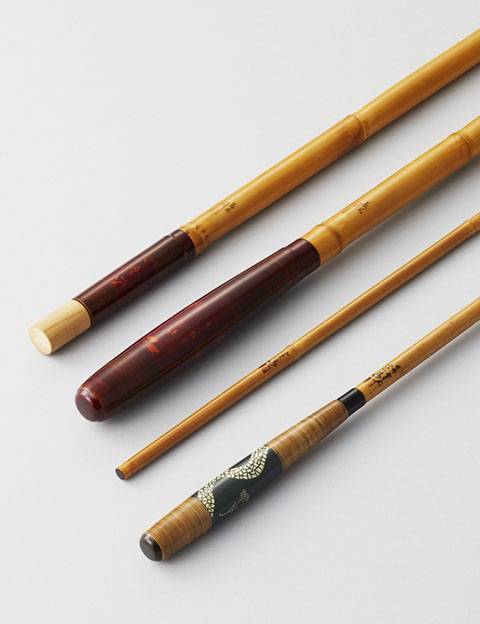KISHU Herazao (Fishing Rods)

Kishu Herazao fishing rods are produced by master craftsmen to catch crucian carp.
The production method was established in Osaka in the 1880s. The site of production site was later moved closer to where the raw material, a species of bamboo called Sasamorpha borealis, is grown and harvested, namely, Hashimoto, Wakayama Prefecture, where it continues to this day. Kishu Herazao fishing rods rose to prominence in the 1920s and 30s when Japan experienced a crucian carp fishing boom and they remain beloved by fishermen today.
Feature
Three to five pieces of bamboo, each approximately 90 cm long, are connected using the namitsugi technique, in which progressively smaller pieces are inserted into the end of the piece before it.
This results in a rod that tapers to a point and has a fat handle, making a well-balanced, attractive fishing tool.
How to make
The process for making a Kishu Herazao fishing rod comprises the following twelve steps, which are performed by a single artisan using only their hands.
1. Drying the raw bamboo
2. Selecting the pieces
3. Firing
4. Removing the insides
5. Carving
6. Winding silk threads
7. Applying lacquer
8. Fitting the pieces together
9. Fashioning the grip
10. Carving the tip
11. Applying lacquer to the body (wiping the body)
12. Finishing

